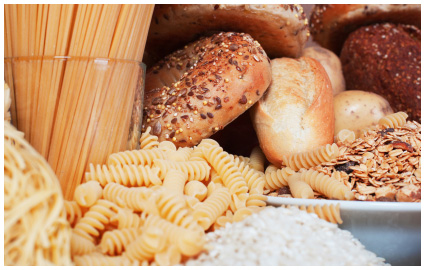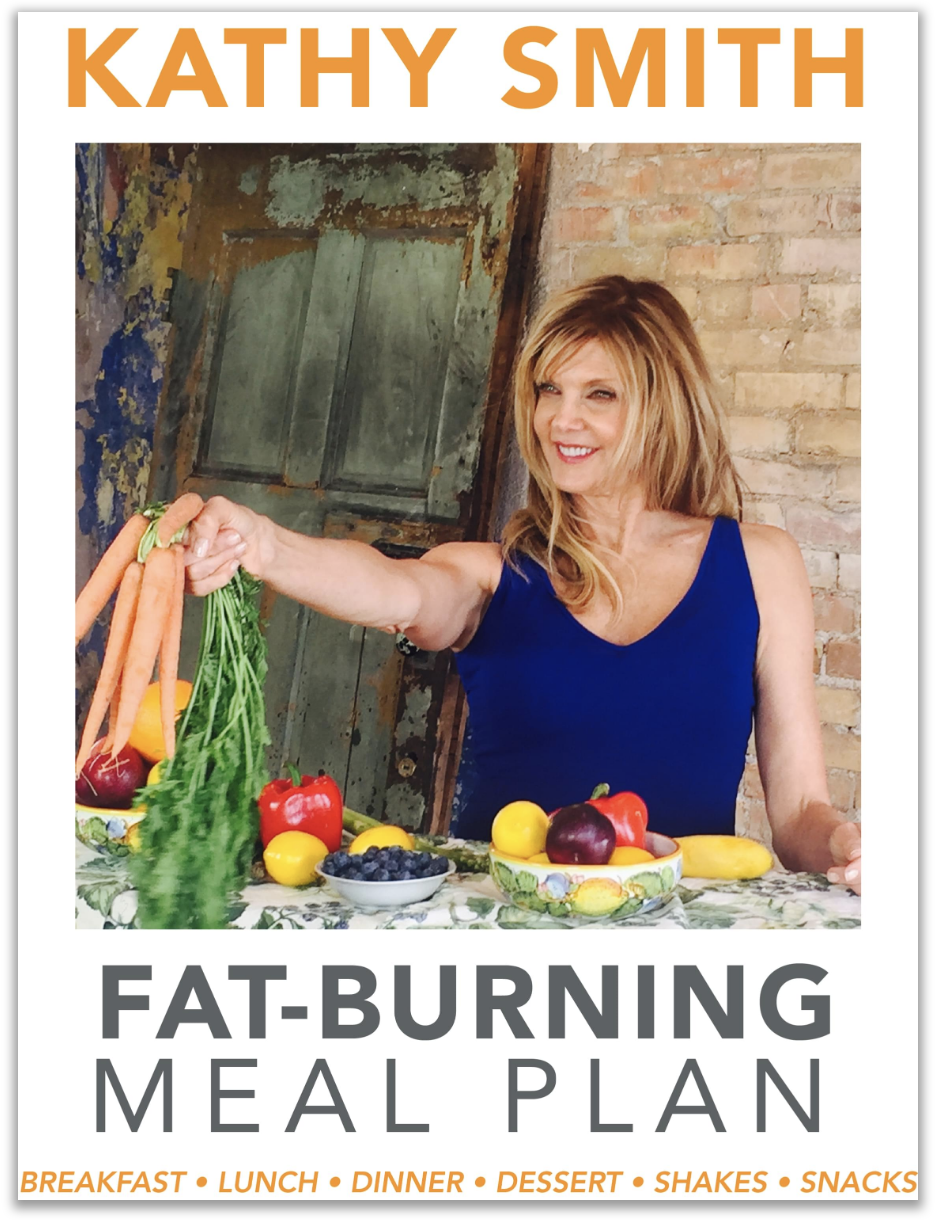How To Eat Carbs And Still Lose Weight

What’s so bad about carbs?
By now we’re all well aware of the low-carb diet craze, and many have tried to skip the bread from time to time, often with mixed results. Most of us are still left asking:
What exactly is all the fuss about?
When you munch on a muffin, here’s what happens to the carbs that you just put in your mouth: they’re converted into glucose, which is essentially the body’s energy. The problem is that there’s only so much glucose that you actually need. The rest is converted into glycogen and stored in the liver and in your muscles. When glycogen storage reaches full capacity, all the extra carbs are converted into fat.
How Much is Too Much?
When it comes to carbs, there’s a range, depending on several factors. First and most importantly, how much time you’re putting in on a treadmill or at the gym is crucial. An elite athlete needs more carbs to fuel her lifestyle than someone who spends most of her day sitting at a computer.
Here’s a ballpark range of what’s appropriate, safe and effective, depending on your level of activity:
SUPER LOW CARB – 0-50g Carbs Per Day: Accelerated Fat Burning Zone
If you’re trying to lose a lot of water weight in a couple days, cut your carbs below 50/day. This isn’t easy to do, and very restrictive, but any professional model or bodybuilder knows it’s the fastest way to lean out in a short amount of time.
This is when your body goes into ketosis, a metabolic state where you’re burning your own fat as a main source of energy. But ketosis doesn’t come without its risks – so talk to your doctor before making any major changes in your diet.
LOW CARB – 50-100g Carbs Per Day: Weight Loss Zone
If you’re staying in this range, chances are good that you’ll achieve healthy weight loss.
I like the way my friend Mark Cisson (creator of the popular blog Mark’s Daily Apple) describes this range: “The primal sweet spot for effortless weight loss.”
MODERATE CARB – 100-150g Carbs Per Day: Weight Maintenance Zone
This supports healthy weight maintenance, because it allows optimal fat-burning and muscle development based on body weight and activity. Here, you get to enjoy ample amounts of vegetables and fruits while avoiding grains and sugars.
HIGH CARB – 150-300g Carbs Per Day: Weight Gain Zone
Even though this is represents the low end of a typical American’s daily carb intake, the truth is that this number can lead to gradual weight gain (depending on the types of carbs you’re eating, and your activity level).
SUPER-HIGH CARB – Over 300g Carbs Per Day: DANGER Zone!
If you’re eating in this range, you’re almost guaranteed to experience continuous weight gain. Mark aptly describes this as “The Danger Zone.”
How to Read Your Carb Label:
The carbohydrate count of the food you eat is usually right there in plain black lettering. If it contains over 30 grams in a small serving, with little to no fiber content, you might want to try a healthier option. Remember, the higher that fiber count is within those carbs, the better. (I could go on about the benefits of fiber, but that’s for another newsletter. For now, just know: Carbs with a high fiber content are generally considered the “good carbs.”)
A Carb Cutter’s Cheat Sheet
Here are a few carb-count examples of some typical foods:
1 Slice of whole wheat bread: 13-16 g/slice
1 can of soda: 35.6 g
1 slice of chocolate cake: 35 g
Mocha Frappucino: 44 g
Cinnamon Raisin Bagel: 65.1 g
1/2 cup of All Bran Cereal: 23.5 g
8 oz. Low-fat Blueberry Yogurt: 48 g
For comparison, here are some carbs that are combined with a little more fiber, which helps you digest them more slowly, and doesn’t create that unfavorable blood sugar spike (which leads to weight gain) caused by other carbs:
1/2 cup of Oatmeal: 12 g (2g of fiber)
1 small Banana: 23.1 g (2.6g of fiber)
1 medium Apple: 19 g (1.7g of fiber)
8 Asparagus Spears: 5.2 g (2.4g of fiber)
1/2 cup of Steamed Kale: 3.6 g (1.3g of fiber)
Take The Next Step:
Due to years of consuming a diet full of processed carbs, most people have grown quite insensitive to one of the most important hormones in our body—a hormone that can either be a huge asset to your body transformation goals, or a total fat loss and health-derailing nightmare.
Its name is insulin.
And insulin’s function is to help your body keep blood sugar at bay, clear it quickly from your bloodstream after a carbohydrate meal, and (hopefully) shuttle that blood sugar to muscle tissue for energy instead of fat.
I say “hopefully” because that’s actually the exact opposite of what occurs when most people eat carbs. Going back to insulin sensitivity and carbohydrate tolerance, due to a diet full of processed, insulin–and blood–sugar-spiking carbohydrates, most folks are suffering from some level of insulin resistance, a state in which insulin is no longer able to efficiently remove blood sugar from the blood stream.
The result? Dramatically reduced fat burning and increased fat storage.
Try My Simple Carb Cycling Guide!
…With the Fat Burning Meal Plan
✅Options for post-workout muscle recovery, afternoon pick-me-ups, or sweet treats to finish your day
✅ Recipes with a touch of natural sweetness that you will crave
✅ Shakes with super-creamy textures that include heart-healthy fats
✅ Whole ingredients to boost your mental clarity and refuel the brain and body
✅ Designed to support your immune system
Your cells will function better, your body will run better, and you’ll look and feel better!
FREE BONUS OFFER!
When you sign up for the Fat Burning Meal Plan, you also receive 12 Daily Visualizations to Stay Motivated and Inspired!
TRANSFORM YOUR MINDSET! Go from stressed out to relaxed in minutes. Whether at home or in the office, these deep visualizations will shift your mindset from chaos to calm. From “Focused,” To “Be Consistent With Exercise,” listening to these tracks might just become the best part of your day.
ONLY $27
Value: $150


Mark’s last name is spelled Sisson, not Cisson.